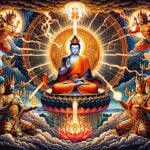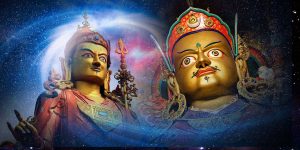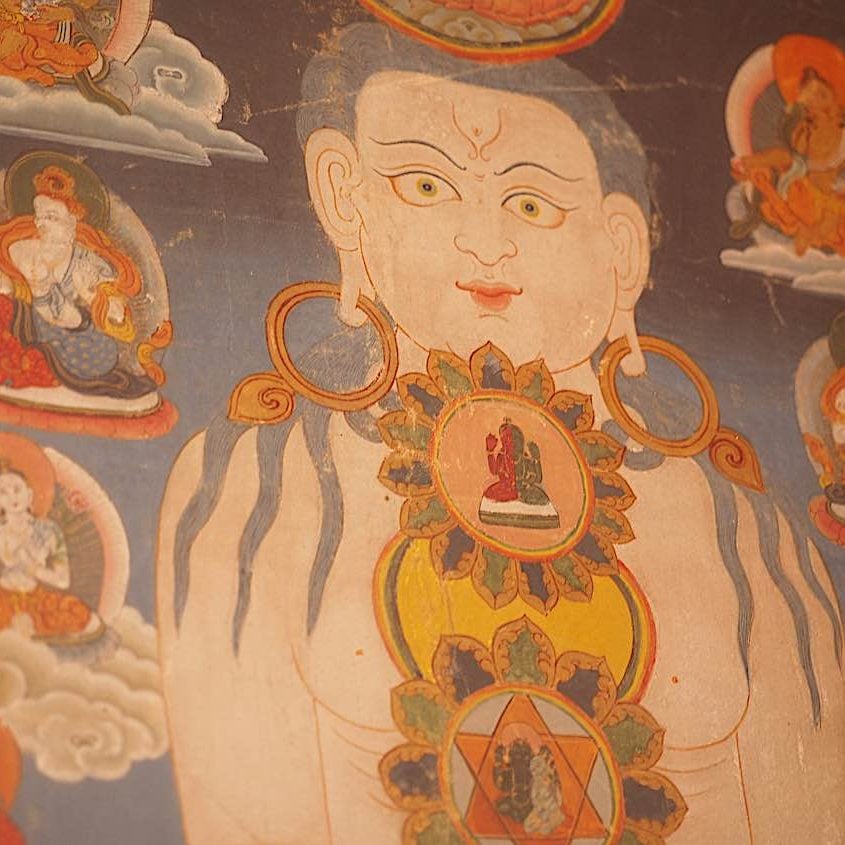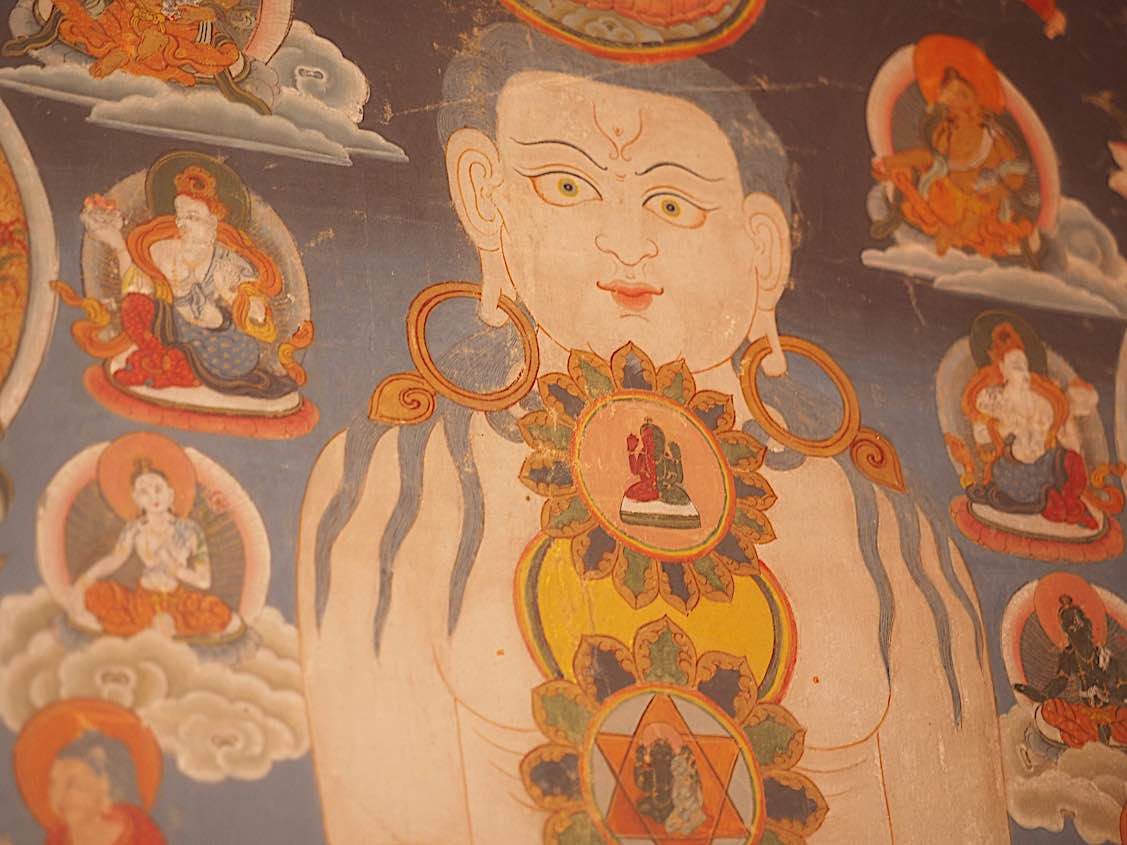VIDEO: Quantum Buddha Guru Rinpoche Padmasambhava Documentary & mantras 108 times chanted w visualizations
https://www.youtube.com/watch?v=fZDln4kJNSQ
Why is Guru Rinpoche, the Lotus-Born Padmasambhava, considered the second Buddha of our times? Why are Padmasambhava’s teachings more than just another teaching lineage in Buddhism? Why are Guru Rinpoche’s teachings more akin to Quantum Physics than religion? In this Buddha Weekly documentary, we answer these questions and more — and finish with the magnificent chanting of Padmasambhava’s mantra 108 times!
Timecodes / Chapters
00:00 Introduction
00:12 The Buddha of Vajrayana Guru Rinpoche
04:21 Guru Rinpoche’s Science of the Mind
05:00 Padmasambhava’s Miraculous Birth
06:11 Eight Forms of Padmasambhava
07:29 Emptiness and Quantum Physics
09:29 Padmasambhava — Emptiness and Entanglement
10:55 The Buddha For Modern, Dangerous Times
12:26 Lotus Family
13:02 Practicing Padmasambhava
13:37 Chanting of Mantra: beautifully sung / arranged / composed by Hrishikesh Sonar

Guru Rinpoche, the Buddha of Vajrayana
The Vajrayana Wheel of Buddhist Dharma that Guru Rinpoche brought to Tibet was more than simply another lineage of Buddhist philosophy. Vajrayana teachings, and especially Guru Rinpoche’s teachings and manifestations, framed a view of reality, of the Universe, more akin to Quantum Physics than religion.
Guru Rinpoche, the Lotus-Born, is honored as the second living Buddha of our age, who turned the final wheel of Dharma, Vajrayana, and brought Buddha Dharma to Tibet. He also embraced the miraculous and wonderous.
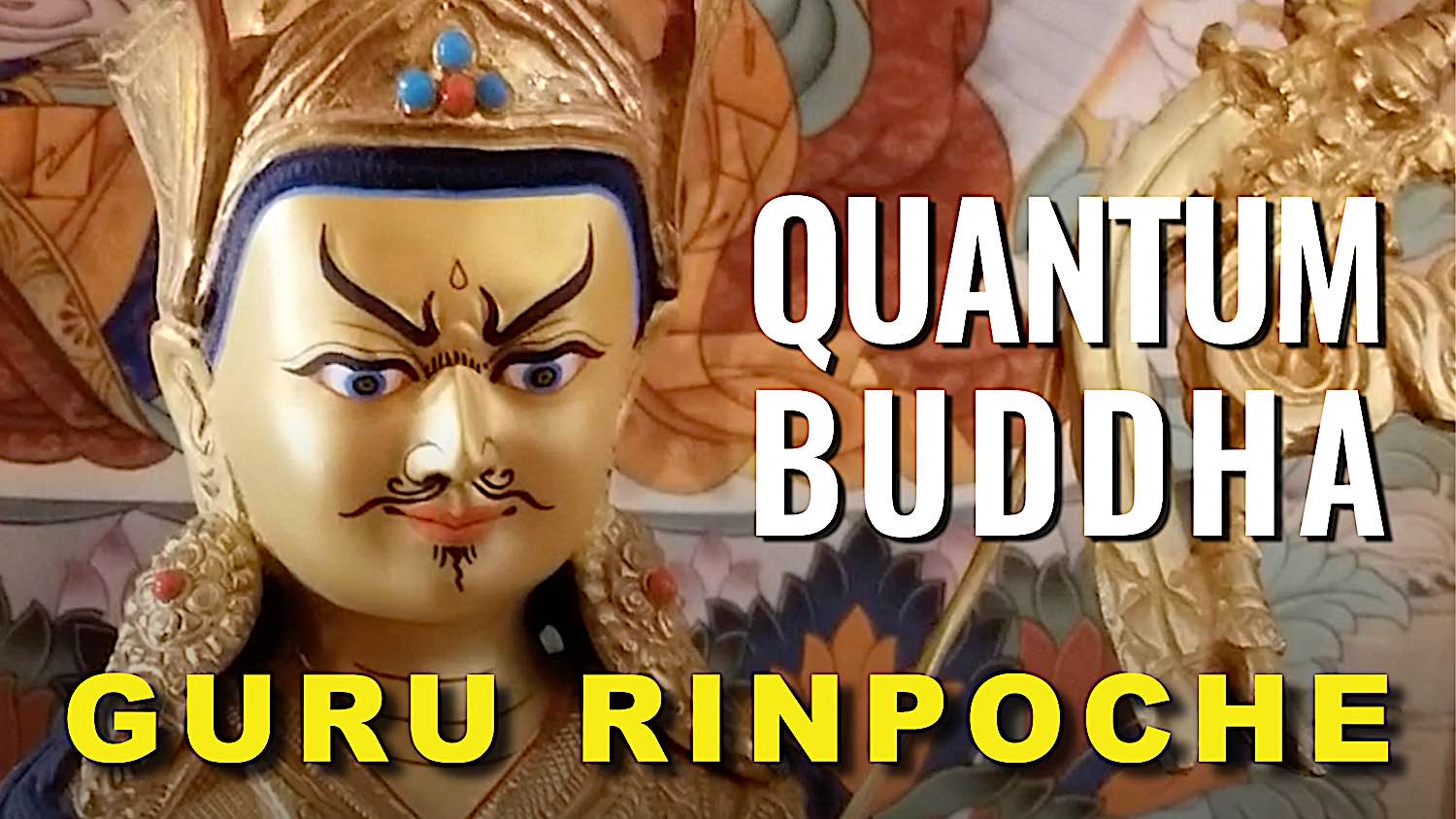
The Lotus Born
Historically, Guru Rinpoche turned the final wheel of Dharma, popularizing the powerful methods of Buddhist Tantra. Traditionally, he is “Lotus Born” in Oddiyana. In the traditional, miraculous accounts he “consciously incarnated as an eight-year-old child appearing in a lotus blossom floating in Lake Dhanakosha, in the kingdom of Oddiyana.” He is the Lotus Born — born fully Enlightened.
“Scholars agree that Padmasambhava was a real person, that he came from Uddiyana, a kingdom possibly located around present-day Swat in Pakistan, and that he arrived in Tibet some time around the year 760.”
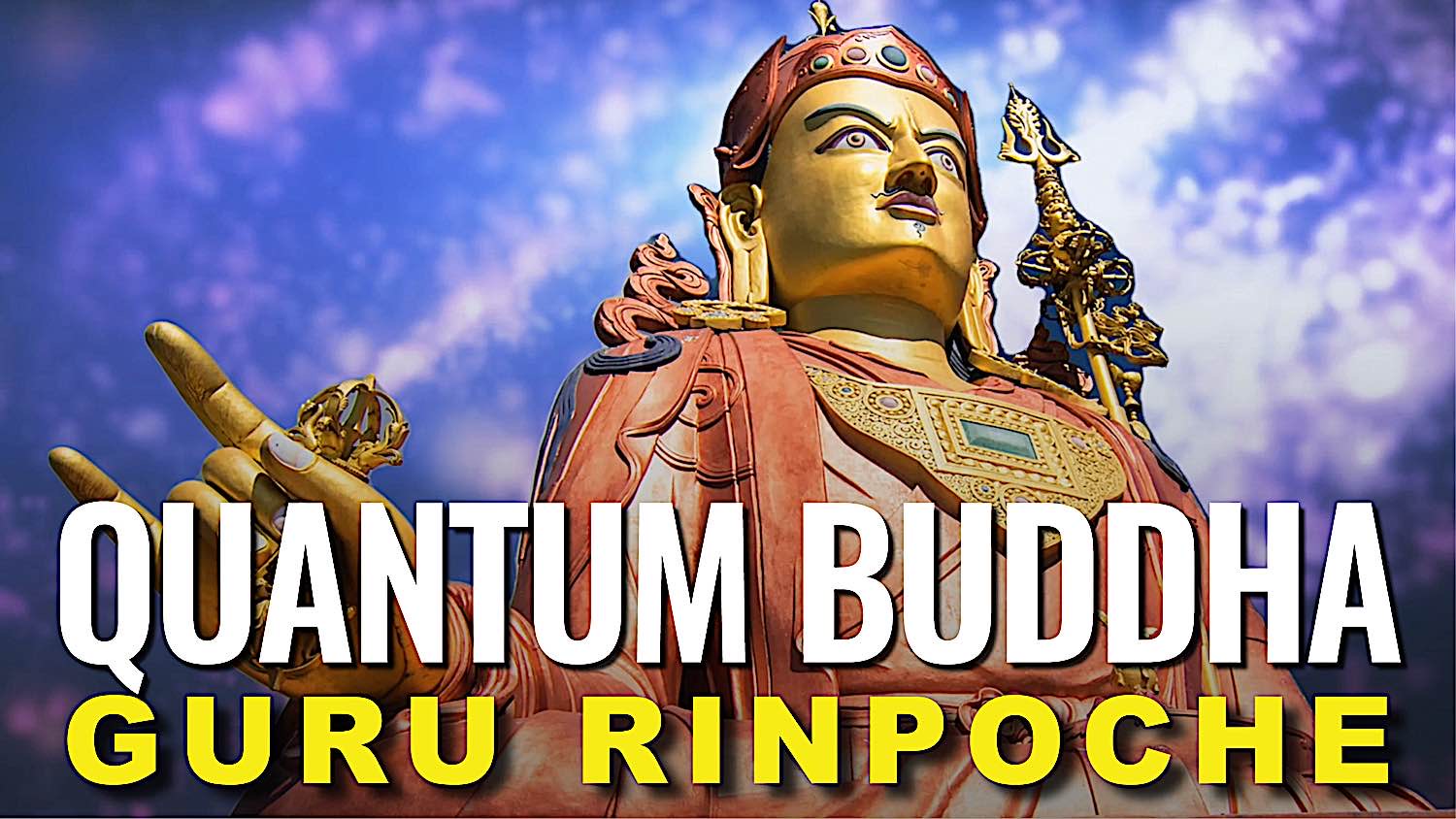
Miraculous and Scientific?
Is it confusing to label Padmasambhava as both the Quantum philosopher and the mystical, magical wizard of Enlightenment and simultaneously as a fully Enlightened Buddha?
Although on one hand he is lauded as the miraculous Lotus Born, he is also embraced by many scientists for his sound Quantum vision. Are they contradictory?
Padmasambhava’s life was a living embodiment of the miraculous. Nothing is impossible to the fully Enlightened and marvelous Guru Rinpoche — and everything about his amazing life is a wonder. Just as Shakyamuni Buddha, the first Buddha of our age, demonstrated extraordinary phenomena, Padmasambhava personified them. Why does an Enlightened Buddha display magical feats? As “Upaya” or skillful means, or upaya-kaushalya meaning “skill in means.” In simplest terms, upaya is any activity that helps others realize enlightenment.
At the same time as he demonstrated the miraculous, especially helpful in presenting the Dharma to Tibet, Padmasambhava taught the science of the mind.
Guru Rinpoche’s Science of the Mind
Tulku Pasang Rinpoche explains his popularity in modern times:
“Padmasambhava’s teaching is the science of the mind.”
Professor of Quantum Physics Dana Zou, clarified Guru Rinpoche’s science of the mind this way:
“Padmasambhava was in touch with Quantum reality, He lived the Quantum reality. He manifested the Quantum reality.”
Padmasambhava’s Miraculous Birth
His miraculous birth, born in a Lotus, was prophesied in texts by the first Buddha, Shakyamuni, the original Quantum pioneer. Padmasambhava’s teachings remain vitally relevant today, especially as the world spins from one crisis to another.
In what way does an ancient living Buddha manifest quantum energy? Padmasambhava popularized meditation methods to help us understand the true nature of reality, and the ultimate nature underlying the illusory “physical world.” Shunyata — Emptiness or Oneness of all phenomenon — is very much a theme in Quantum Physics.
Guru Rinpoche, the Great Lotus Born, was none other than the original Quantum Physics explorer. He didn’t just theorize — he experienced. He also taught us how we could likewise peel away the trap of “ordinary appearances” and experience for ourselves.
Eight Forms of Padmasambhava
One way he demonstrated the “layers” of reality often discussed in Quantum Physics is through his manifestations. In a wonderful documentary by Shambala Film Studios titled Guru Rinpoche — Searching for the Lotus-Born Master, the narrator suggests,
“He lived in the eighth century and traveled across many regions of the Himalayas, where he appeared as different manifestations… Images of these eight manifestations are often depicted in murals, Thangkas, statues, and dances across the Himalayas… Each manifestation represents a different stage in his journey to Enlightenment and spreading Tibetan Buddhism across the Himalayas.
“Is it possible that behind each manifestation there may be a coded language revealing the laws of quantum physics?”
Emptiness and Physics
Buddhist Scholar Mu Seong explains:
“In the paradigm of quantum physics there is ceaseless change at the core of the universe; in the paradigm of Mahayana wisdom too there is ceaseless change at the core of consciousness and the universe.”
Professor Vlatko Vedral, a Professor of Quantum Information Theory, concurs:
“Quantum physics is indeed very much in agreement with Budhistic Emptiness.”
Although these concepts are Mahayana, introduced by Shakyamuni Buddha, they were exemplified in the Vajrayana teachings of Padmasambhava. The Second Buddha of our times, Padmasambhava, was the “explorer” and revealer of Quantum mysteries. His methods remain relevant and powerful today.
Padmasambhava Buddha, iconic of Vajrayana Buddhism, challenges notions of reality with elaborately visualized mandalas and practices — which we build up mentally in our meditations, only later to dissolve to emptiness. The psychology of these visualizations is certainly sound. For example, visualizing the same Buddha in a wrathful form helps us focus our mind on powerful concepts of protection and power.
Padmasambhava taught many Yidams, chief among them Hayagriva, the wrathful form of Amitabha Buddha. It would be a mistake to think of these multiple emanations and appearances of Enlightened Deities as separate. All are ultimately aspects of Oneness.
The Buddha for modern, dangerous times
Padmasambhava remains very “relatable” in our century. He remains a living Buddha to Tibetan Buddhists. Even amongst non-Buddhists, his reputation is well known.
His piercing, magnetic and “magical appearance” in his main form reinforces this persona. As described in the amazing Himalayan Art dot org resource:
“With a steady gaze looking on all beings, one face adorned with a moustache and small goatee, the right hand holds to the heart an upright gold vajra. The left hand placed in the lap holds a white skullcup filled with nectar. The ornate katvanga staff of a Vajrayana mendicant rests against the left shoulder. Adorned with gold earrings and various ornaments, the head is covered with a lotus hat, a gift of the King of Zahor, with silk brocade topped with a half-vajra and vulture feather. Attired in various robes of different colours reflecting the disciplines of the Vinaya, Bodhisattva and Mantra Vehicles, in a relaxed posture with the right foot extended resting on a lotus cushion, he is seated on a sun and moon disc above a pink lotus.”
Lotus Family
Padmasambhava, the Lotus Born, is especially linked to the Lotus family of Amitabha Buddha. One beautiful practice in Vajrayana Buddhism focuses on visualizing and meditating on the entire Lotus family of magnetizing deities.
Hayagriva, wrathful Amitabha, also called Padma Heruka, the Lotus Hero, was especially a treasured personal yidam of great Padmasambhava.
Practicing Padamsambhava
The easiest way to connect with his practice and his energy is to chant his mantra each day, while visualizing his powerful face and piercing, energetic eyes. At the end of this video we present this amazingly empowered mantra, chanted beautifully 108 times with visualized images. Chant along with us now.
More articles by this author
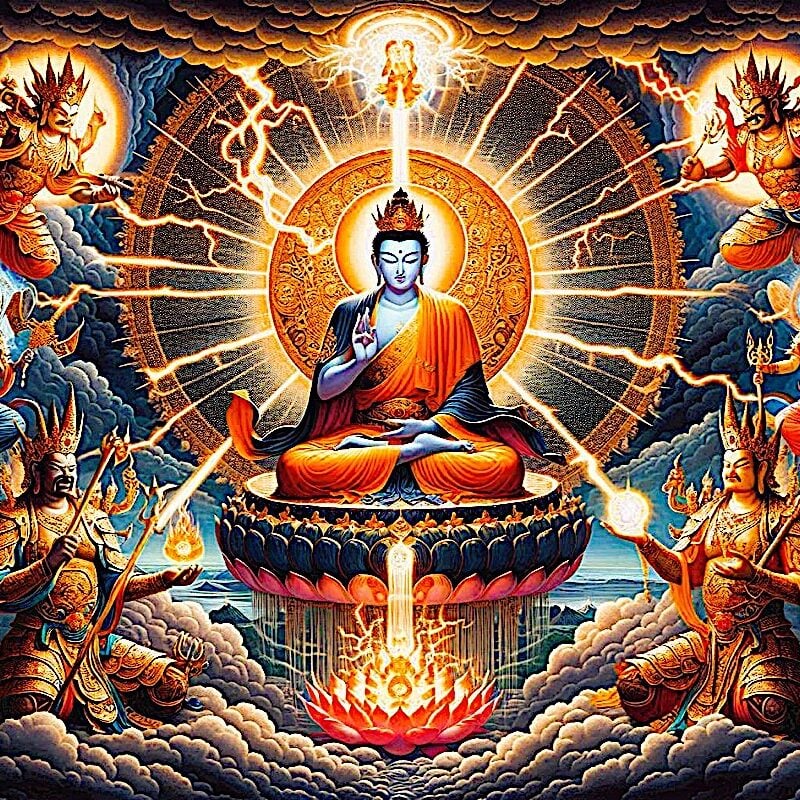
Protection from all Harm, Natural Disaster, Weather, Spirits, Evil, Ghosts, Demons, Obstacles: Golden Light Sutra: Chapter 14
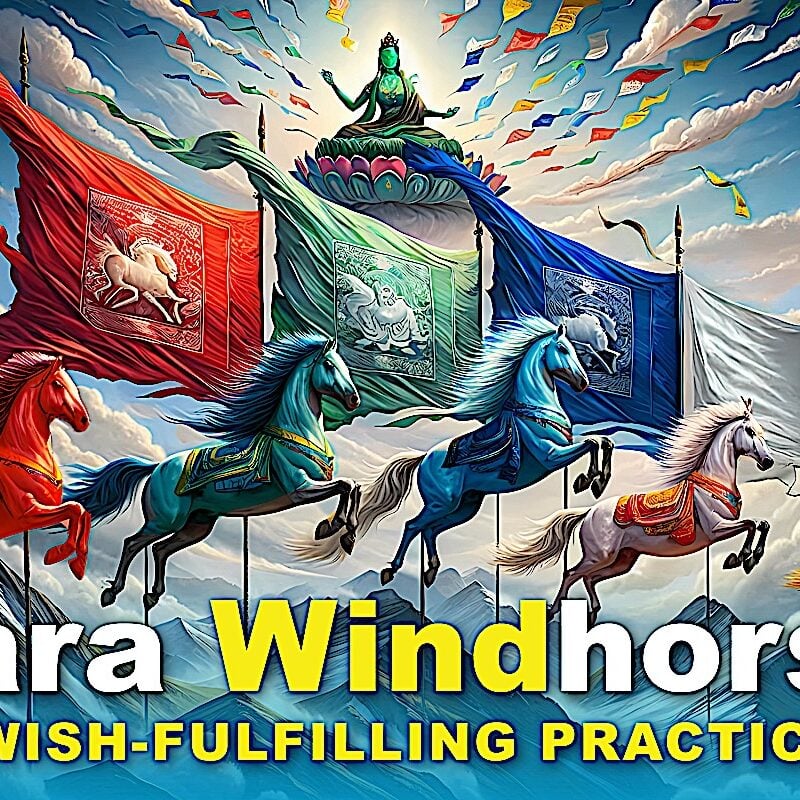
SUPPORTING MEMBER VIDEO: Tara Windhorse – Buddhist Wish-Fulfilling Practice: the Mother of all Mantras, Chi, Wind and Prana

Guru Rinpoche is ready to answer and grant wishes: “Repeat this prayer continuously” for the granting of wishes

VIDEO: Vajrapani Vajra Armor Mantra: Supreme Protection of Dorje Godrab Vajrakavaca from Padmasambhava
Search
Latest Features
Please support the "Spread the Dharma" mission as one of our heroic Dharma Supporting Members, or with a one-time donation.
Please Help Support the “Spread the Dharma” Mission!

Be a part of the noble mission as a supporting member or a patron, or a volunteer contributor of content.
The power of Dharma to help sentient beings, in part, lies in ensuring access to Buddha’s precious Dharma — the mission of Buddha Weekly. We can’t do it without you!
A non-profit association since 2007, Buddha Weekly published many feature articles, videos, and, podcasts. Please consider supporting the mission to preserve and “Spread the Dharma." Your support as either a patron or a supporting member helps defray the high costs of producing quality Dharma content. Thank you! Learn more here, or become one of our super karma heroes on Patreon.
Lee Kane
Author | Buddha Weekly
Lee Kane is the editor of Buddha Weekly, since 2007. His main focuses as a writer are mindfulness techniques, meditation, Dharma and Sutra commentaries, Buddhist practices, international perspectives and traditions, Vajrayana, Mahayana, Zen. He also covers various events.
Lee also contributes as a writer to various other online magazines and blogs.




